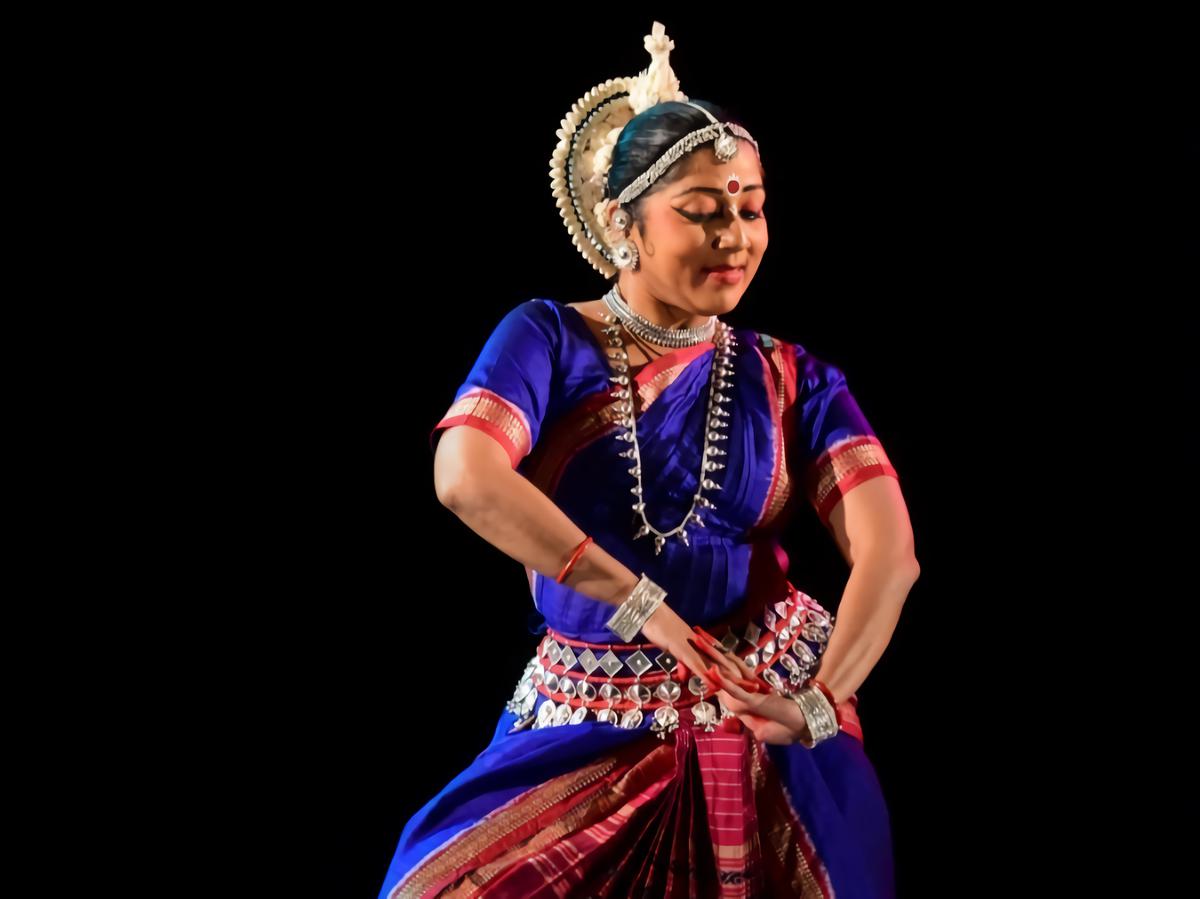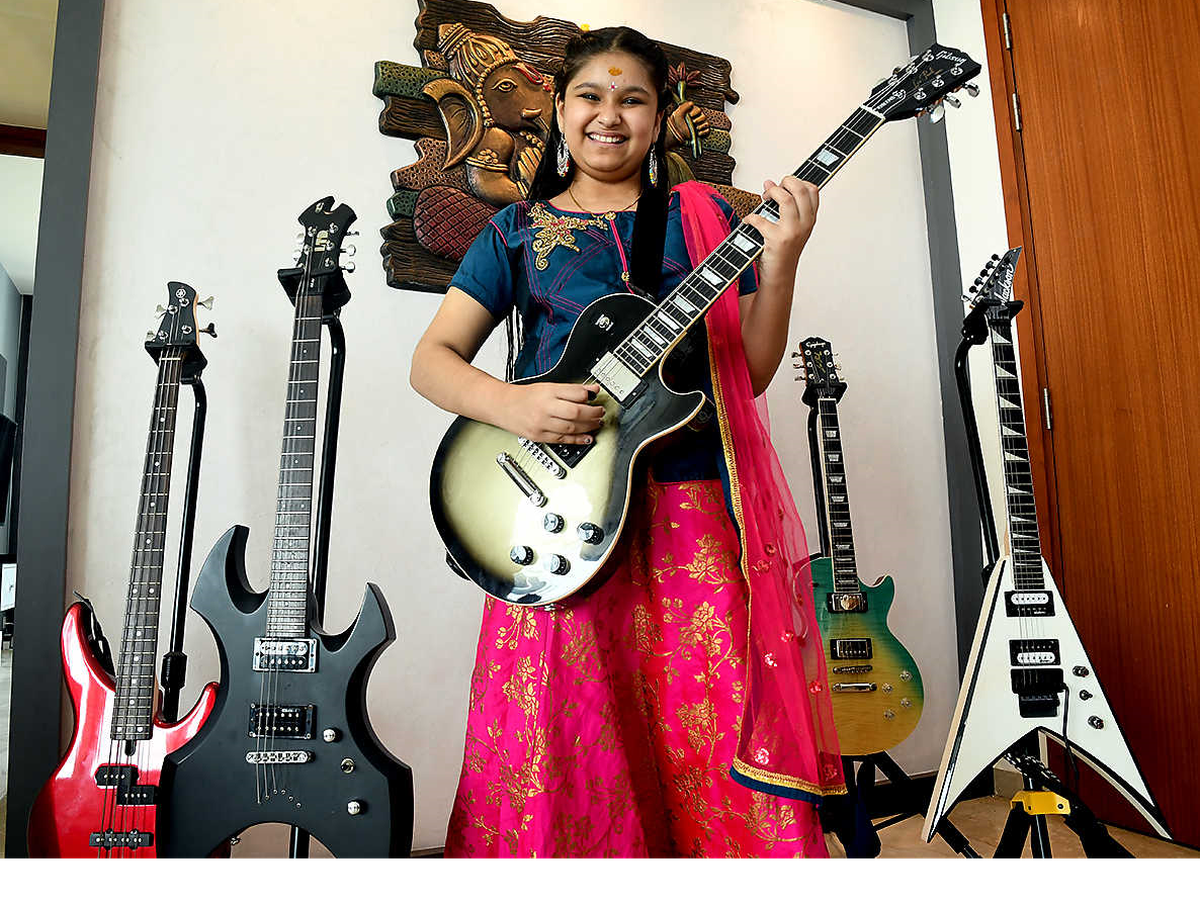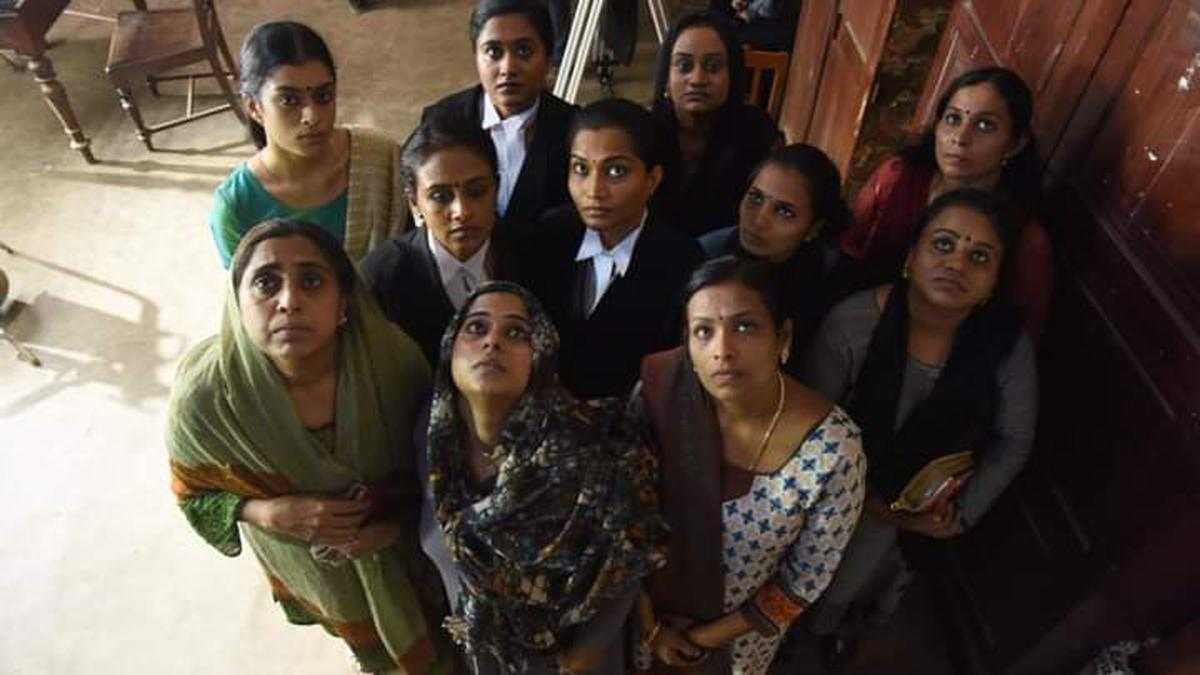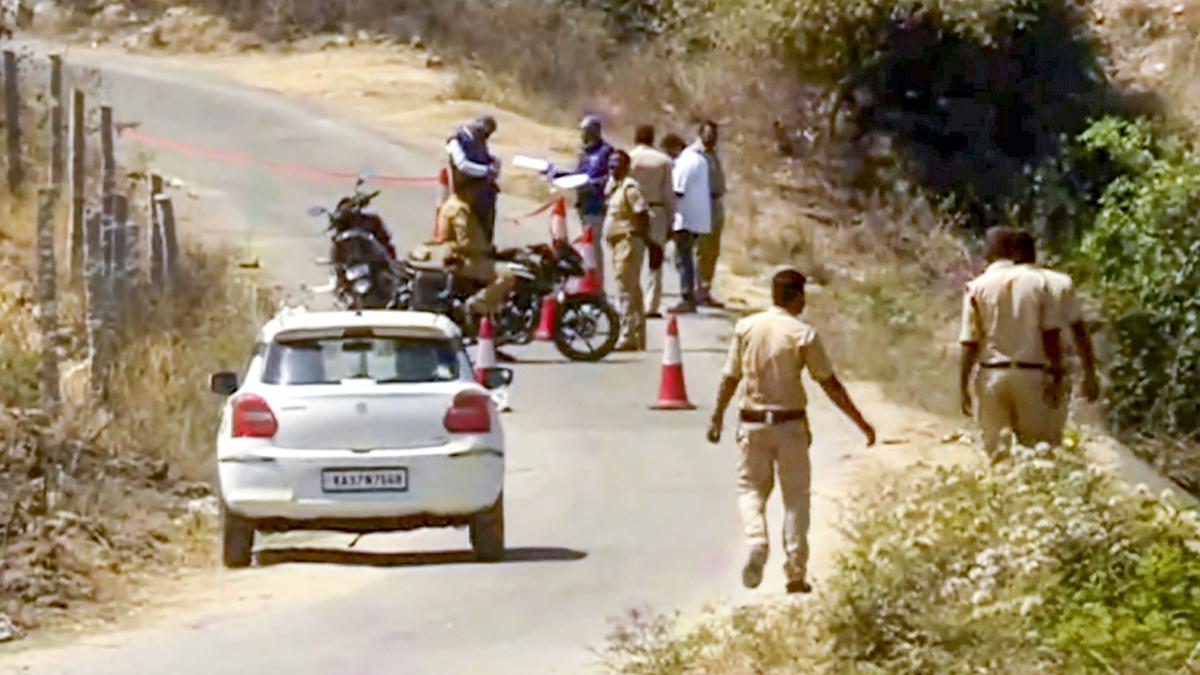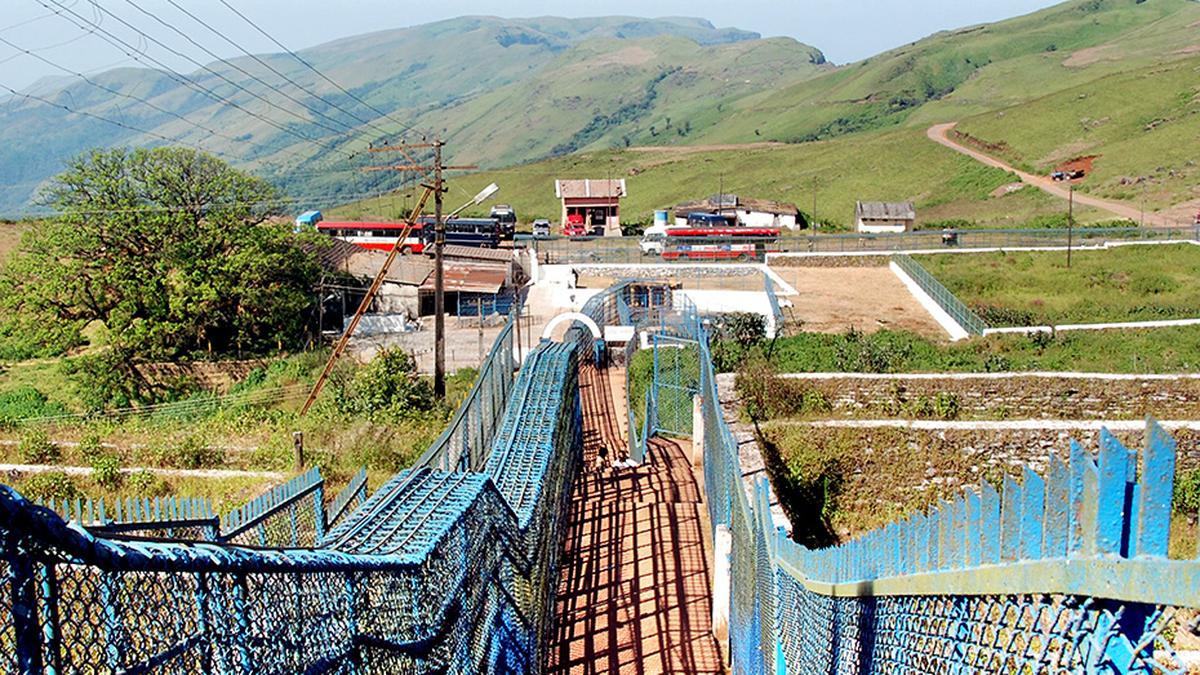As you enter the white marbled Safed Baradari, the landmark structure of Qaiserbagh in Lucknow, it is hard to believe it was built as a Palace of Mourning (Qasr-ul-Aza) by Wajid Ali Shah, the last Nawab of Awadh.
Craft, music and history lovers throng the baradari’s (a structure with 12 doors) colonnaded hall with high ceilings, latticed balconies, carved arches and huge chandeliers during the five-day annual Mahindra Sanatkada Lucknow Festival (February 3 to 7). Despite the venue bustling with visitors, you cannot miss seeing the intricate motifs, particularly of intertwined fish (royal insignia), around the windows, gateways, and walls.
The large chabutra (portico) in the front, which was once surrounded by lush gardens, turns into a stage during the festival. A narrow set of stairs leads to the tehkhana (underground), where vignettes from Awadh’s art history are on display in the form of installations and photographs while qissa gois (storytellers) narrate anecdotes from the lives of legendary artistes.
The festival offers a cultural voyage across Awadh, home to innumerable poets, musicians and composers, through music, dance and theatre performances, heritage and craft walks, discussions, workshops and food displays.
A kathak ensemble led by Shinjini Kulkarni, granddaughter of Pt. Birju Maharaj
| Photo Credit:
Courtesy: MSLF
Woman behind the festival
Conceived by cultural and social activist Madhavi Kukreja in 2010, the festival, initially launched as a showcase of craft traditions, has grown into an inclusive space to project the Ganga Jamuni tehzeeb (syncretic culture) intrinsic to Awadh. To document this aspect for a contemporary generation, each edition is based on a theme — this year’s was ‘Raqs-o-Mausiqi’ (dance and music).
The festival has consciously been widening its platform. Here, Hindustani, Carnatic, qawwali, ghazal, brass bands, bhajan, choir, photography, painting and naqashi co-exist beautifully.
“Our team of young researchers begins work months in advance. A lot of brainstorming happens before we arrive at a themewhose appeal can cut across generations and communities. In the past 13 years, we have dug deep into the Awadhi sundook (iron trunk) to unearth some real gems. And there is much more left to explore. We have about 20 themes on hand,” says Madhavi, who has been working on the festival with Lucknow-based Askari Naqvi, an entrepreneur and a well-known dastango (storytelling in Urdu).
Audience thronging the festival venue
| Photo Credit:
Courtesy: MSLF
Enjoying her role as a catalyst in bridging the gap between art traditions and a technologically-driven world, Madhavi says, “Sadly, we have today restricted art to the proscenium. It should be immersive and inescapable, engaging us in our everyday lives. A reason why I wanted to give the festival the colour and ambience of a mela (fair), inspired by the Budakki ka Mela held on the banks of River Gomti. And to have the Mahindra group backing this dream project is the best thing to have happened because they are extremely keen about preserving and celebrating diverse artistic traditions. Anand Mahindra also has a personal connect with the festival since his mother hailed from Lucknow and was a patron of art and crafts.”
While the annual event has made the residents of the region feel rooted once again, outsiders can experience Lucknow beyond the touristy imambaras and baghs (parks).
The making of the Lucknow gharana
‘Raqs-o-Mausiqi’ took a closer look at the making of the Lucknow gharana, largely associated with Kathak and the tabla. Artistes and scholars, through their concerts and talks, highlighted how the pluralistic socio-cultural fabric aided in its emergence and popularity.
“After Nawab Asaf-ud-daula shifted the capital of Awadh from Faizabad to Lucknow in 1775, the city gained prominence politically and culturally,” says Askari, who is credited with taking the art forms associated with Muharram, especially Soz Khwani, from their strictly religious settings to a wider secular audience.
The Taal Vadya Kachahari by group of five artistes
| Photo Credit:
Courtesy: MSLF
“Once Lucknow became the centre of power, artistes from Delhi began to move into the city to find patronage since the Nawabs were known for their benevolence and cross-cultural leanings. So, the Lucknow gharana has essentially been shaped by these artistes and rulers. In the few years that Wajid Ali Shah spent at the Qaiserbagh Palace complex (constructed between 1847 and 1850), the venue of the Sanatkada festival, his court teemed with musicians, dancers, poets and theatre artistes,” says Askari.
A trained vocalist and Kathak dancer, the Nawab had a natural flair for composing. The many ghazals and thumris, which he wrote under the pseudonym ‘Akhtarpiya’, found their way into Hindustani music and Kathak repertoires. His magnificent Rahas, inspired by Ramleela, were operatic performances that probably could be referred to as early Hindustani theatre. ‘Radha Kanhaiya Ka Kissa’ was the first ensemble work staged by the Nawab as part of the seminal Rahas. While in ‘Inder Sabha’, the Urdu opera written by poet Agha Hasan Amanat, the Nawab donned the role of Lord Indra.
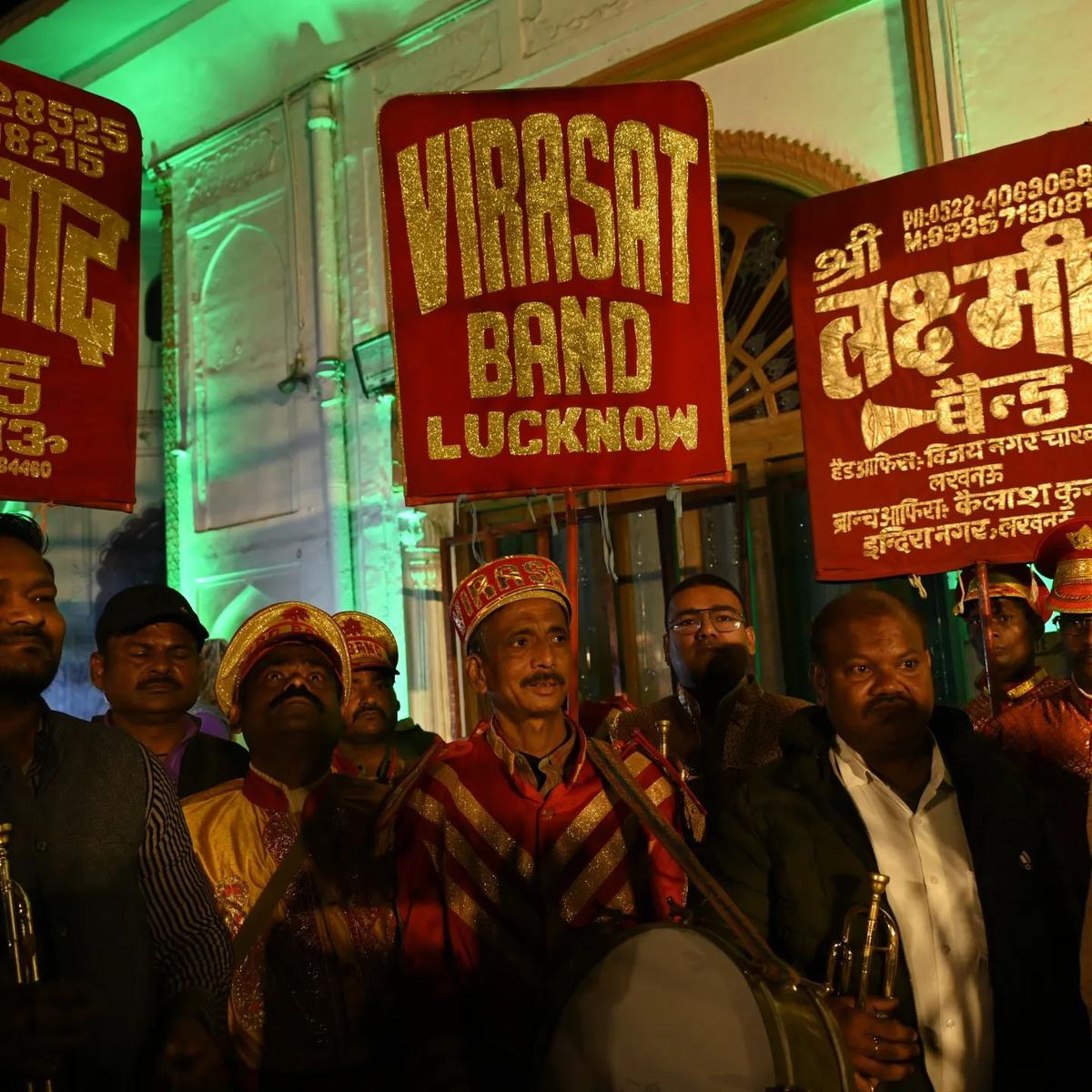
The Virasat and Lakshmi band members
| Photo Credit:
Courtesy: MSLF
Distinct Kathak style
“ Adayagi and nazakat (style and gentleness), the defining features of the Lucknow style of Kathak, are influenced by the royal court,” says Shinjini Kulkarni, granddaughter of Pt. Birju Maharaj. In the darkness of a cold winter morning, she threw light on how the Nawab worked with her ancestors, the brothers Kalka Prasad and Bindadin Maharaj, to lend the dance form an Indo-Persian flavour. “Our family of kathakars and bhajan singers hailed from Kichkila village in Allahabad.The original compositions focussed on the Bhakti rasa, but with the impact of semi-classical forms of music such as thumri, holi and chaiti, dancers began to perform a lot of shringar rasa compositions too,” she said, while introducing the various pieces to the audience.
This celebrated legacy that put the dance form on the global map is impeccably showcased at the Kalka-Bindadin Ki Dyodhi in Lucknow’s Wazirganj area. The house gifted to the legendary brothers by Nawab Wajid Ali Shah has been turned into a museum. This is where Pt. Birju Maharaj was born. This is where Kathak was born.
Whether it was Naveen Mishra and Zeeshan’s sarangi-sitar jugalbandi, choir performance by the La Martiniere Girls’ college, T.M. Krishna’s immersive singing, Haider Buksh Warsi’s power-packed qawwali, Anindo Chatterjee’s solo tabla recital or the the taal-vadya kachahri, these performances reflected the Mahindra Sanatkada Festival team’s effort to take forward Wajid Ali Shah’s cultural vision.
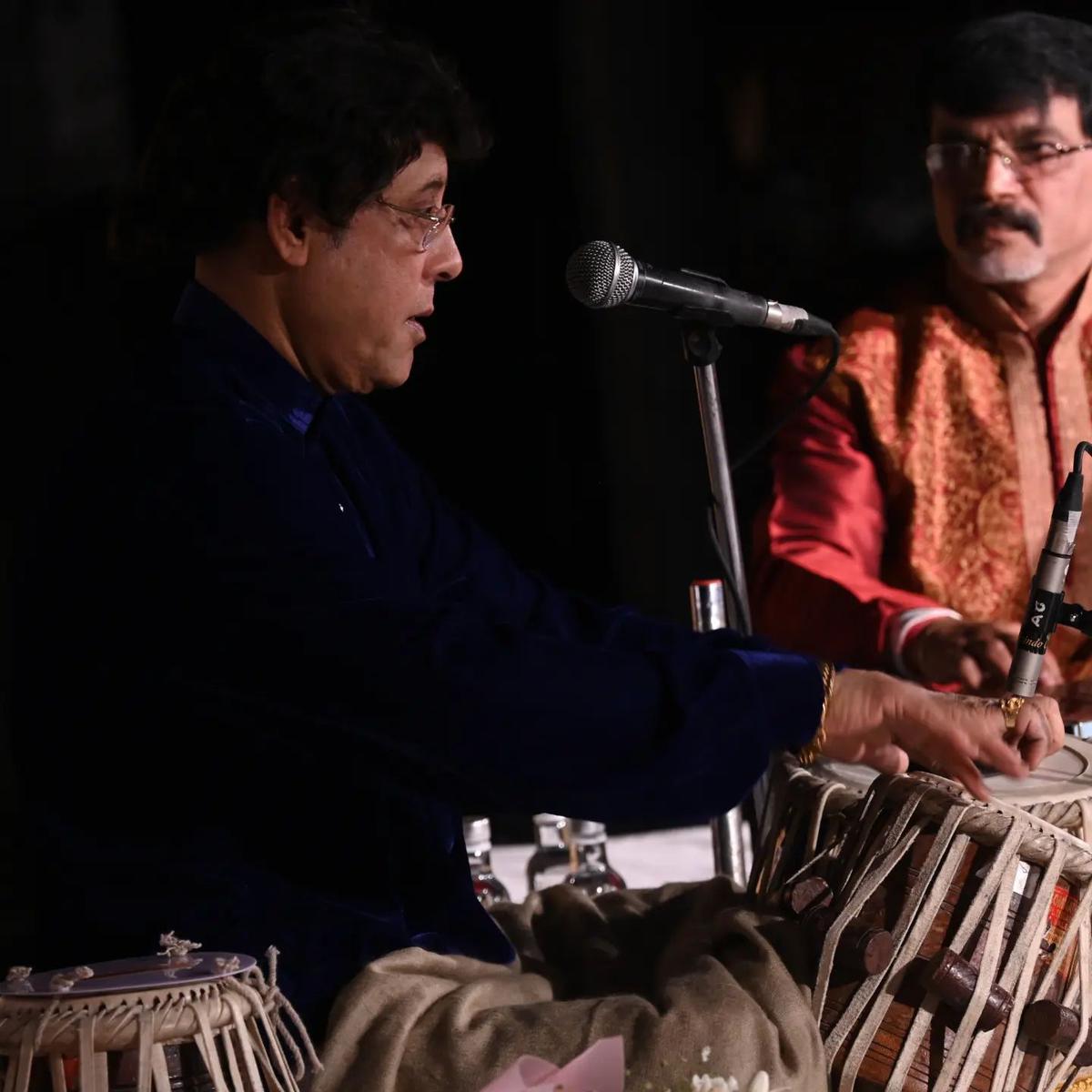
Anindo Chatterjee impressed with his nuanced playing
| Photo Credit:
Courtesy: MSLF
How the tabla gained
Also referred to as Purang Ang or Khula Baaj, the Lucknow gharana of tabla was established by Ustad Bakshu Khan and Modu Khan. The playing style and bols are influenced by the pakhawaj, with the palm being used along with the fingers to produce a loud and striking sound. Well-known tabla artiste Anindo Chatterjee, who performed at the festival, belongs to the Farukhabad gharana but also trained under the Lucknow gharana doyen, Ustad Afaq Hussain Khan


